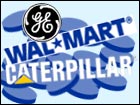
Washington Mutual is a well branded bank everyone has heard of. Unfortunately, the EPS is negative given all the issues they have had with the mortgage side of the business. Regardless, they continue to provide a 3.6% dividend yield and I highly doubt this company is going to go down the drain. The company market cap is fairly large with over 13B. I have been buying WM for a few years now at high prices, but now I continue to buy with discounted price. Since the EPS is negative the PE ratio is not calculated. This is a good buy for the long-term buy to hold














